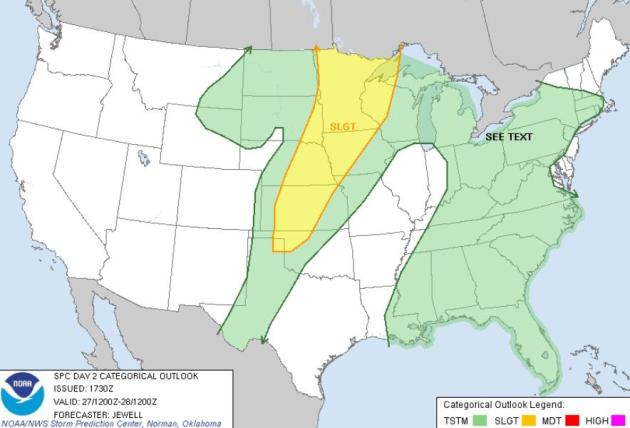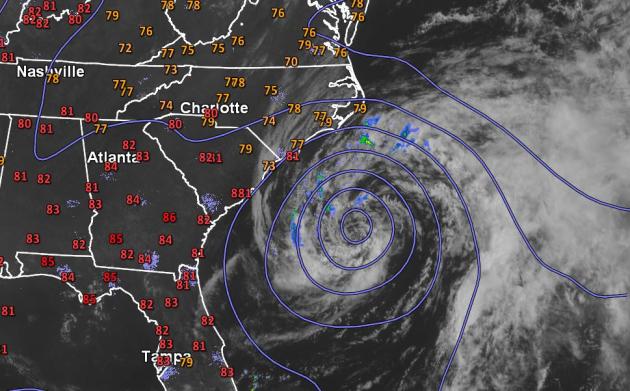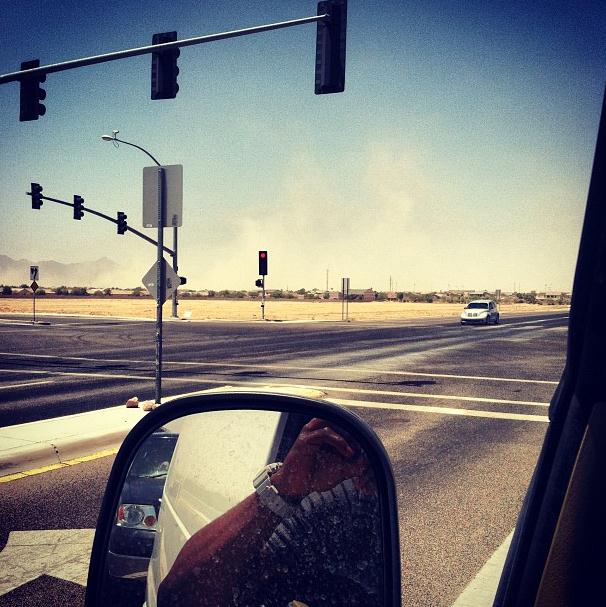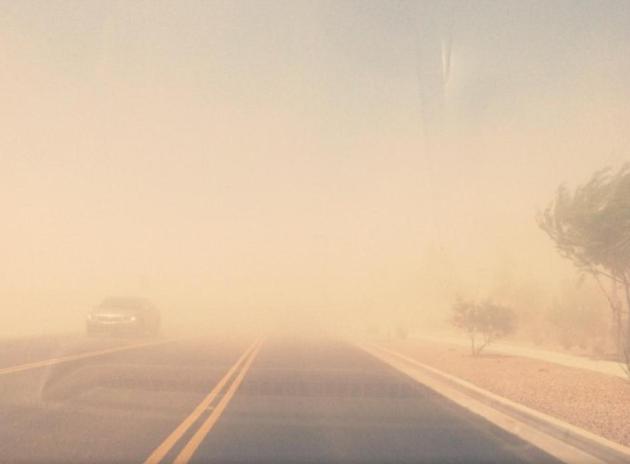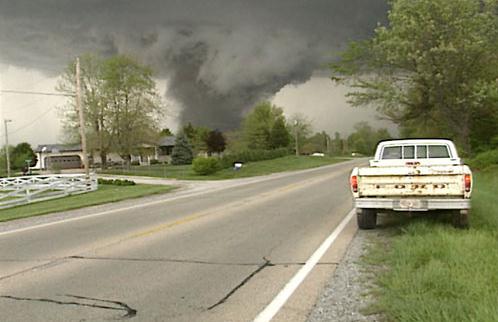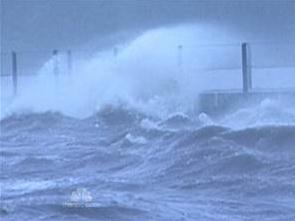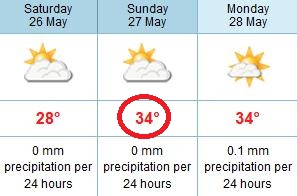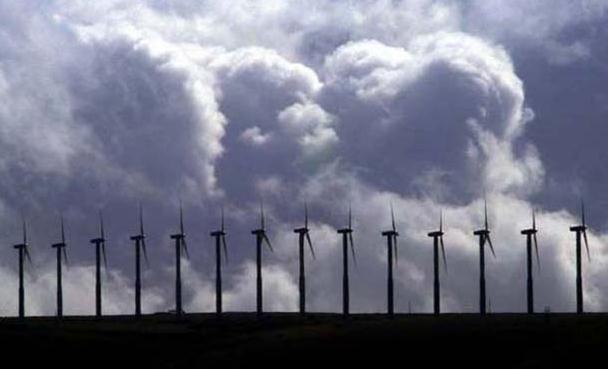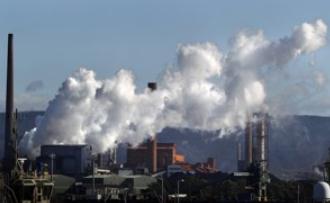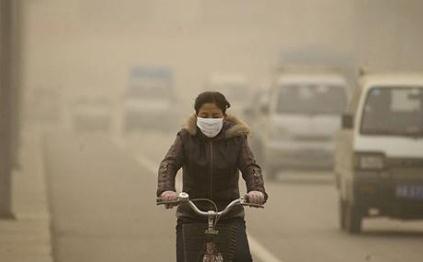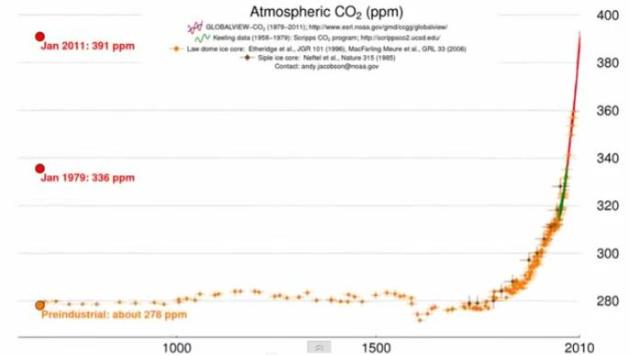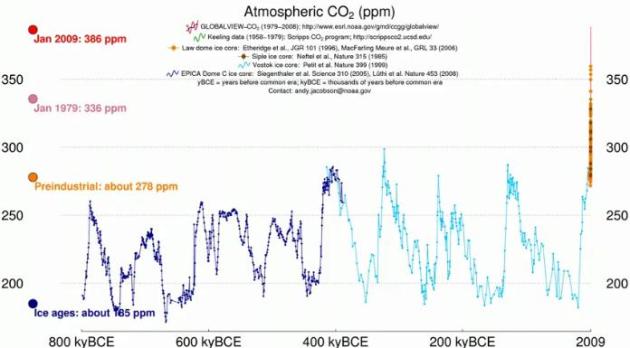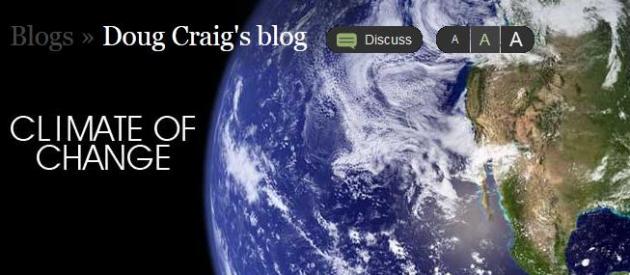Sunday Severe Threat. A strong surge of hot, steamy
air will spark waves of strong to severe thunderstorms today; an
eastbound cool front may spark a few severe storms late Sunday into
Sunday night across the Plains and Upper Midwest. Maps courtesy of
SPC.
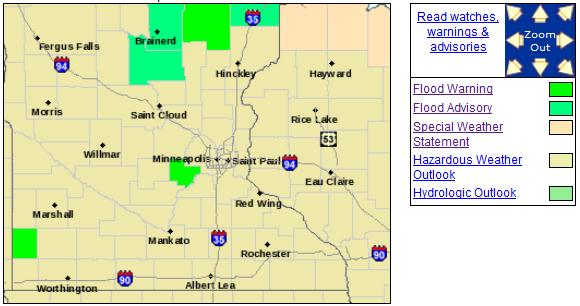 Flood Warning.
Flood Warning.
Recent (torrential) rains have resulted in flooding in the Brainerd
area and much of northern Minnesota. Closer to the metro area the South Fork Crow River below Mayer is flooding in Carver county; details from the
local NWS office:
FLOOD WARNING
NATIONAL WEATHER SERVICE TWIN CITIES/CHANHASSEN MN
950 PM CDT SAT MAY 26 2012
...THE NATIONAL WEATHER SERVICE IN CHANHASSEN HAS ISSUED A FLOOD
WARNING FOR THE FOLLOWING RIVERS IN MINNESOTA...
SOUTH FORK CROW RIVER BELOW MAYER AFFECTING CARVER COUNTY
.ADDITIONAL HEAVY RAINS TONIGHT THROUGH TOMORROW NIGHT COULD CAUSE RIVER
LEVELS TO RISE EVEN HIGHER THAN PREDICTED. THE NATIONAL WEATHER
SERVICE WILL MONITOR THIS DEVELOPING SITUATION AND ISSUE FOLLOWUP
STATEMENTS AS CONDITIONS OR FORECASTS CHANGE.
PRECAUTIONARY/PREPAREDNESS ACTIONS...
DO NOT DRIVE CARS THROUGH FLOODED AREAS. TURN AROUND...DON`T DROWN.
STAY TUNED TO NOAA WEATHER RADIO OR YOUR LOCAL RADIO OR TV STATION
FOR THE LATEST INFORMATION CONCERNING THIS FLOOD EVENT.
 Saturday Doppler Radar Rainfall Estimates
Saturday Doppler Radar Rainfall Estimates.
MPX Doppler showed some 1-3" estimated amounts south and southeast of
the metro area yesterday, the heaviest (3") amounts from Hastings to Eau
Claire - the same "supercell" that spawned golfball-size hail.
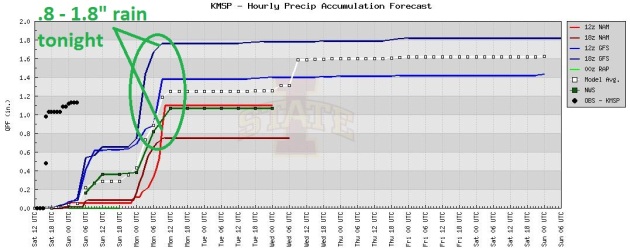 Monsoon Season
Monsoon Season. So much for the drought eh? Good grief. Like turning on a switch:
instant
inundation. Models all agree that more heavy rain will fall tonight,
predicting anywhere from .8 to 1.8". I tend to agree with the NAM
solution: around 1" of additional rain overnight.
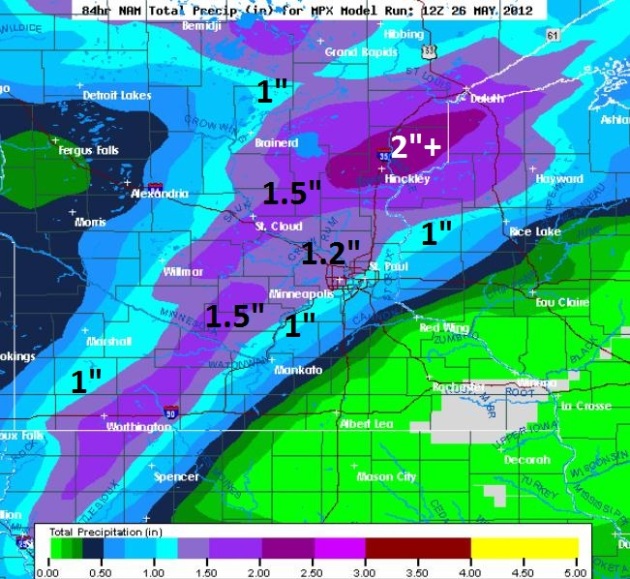 Predicted Rainfall Tonight.
Predicted Rainfall Tonight.
An eastbound cool front will probably squeeze out the heaviest rainfall
amounts from near Duluth and Hinckley to St. Cloud and the western
suburbs of the Twin Cities, as much as 1-1.5" of additional rain.
"
Specifically, numerous complaints were made to NOAA and the
Department of Commerce Inspector General, which have now been verified,
that the Chief Financial Officer of the National Weather Service (NWS)
was misappropriating funds from his program accounts and redirecting
them to 122 weather offices nationwide, which conduct critical
forecasting of weather events and major storms." - part of a press release from Maine Senator Olympia Snowe's office; details below.
"
For decades, solar activity has been trending downwards, even as
temperatures have continued to rise. It's not that the researchers are
being induced or compelled to some sort of biased interpretation of
the data. Reality just happens to have a bias." - from an article about money and climate science at Ars Technica below.

"
The total weight of CO2 that entered the atmosphere thanks to
fossil-fuel burning last year was 31.6 billion metric tons (or nearly
35 billion old-fashioned tons). That’s a 3.2 percent increase over 2010,
setting an all-time record. To see what that looks like in real time,
you can check out Deutche Bank’s carbon counter, which pegs the accumulate weight at more than 3.7 trillion metric tons." - from a Climate Central story below.
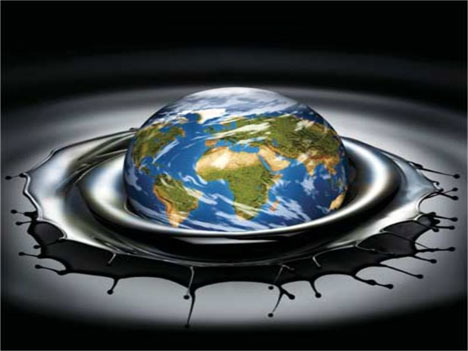
"
A September 2009 study
by the Environmental Law Institute (ELI) provides a snapshot of this
disparity. It found that between 2002 and 2008, the government gave
fossil fuels $72.5 billion, corn ethanol $16.8 billion, and renewable
energy $12.2 billion in subsidies. In other words, 71 percent of federal
subsidies went to oil, natural gas and coal, while only 12 percent
went to renewables."
"
The question should be whether the government should continue to
underwrite extremely profitable, mature industries--especially highly
polluting ones--at the expense of nurturing new, promising low-carbon
alternatives. The obvious answer is no. Renewables currently generate
only about 5 percent of U.S. electricity, but by 2030 they have the
potential to produce more than 40 percent, half coming from wind. That
would just about replace the share currently generated by coal, which
is responsible for more than 80 percent of U.S. utility sector carbon
emissions."
- from a Huffington Post article below.
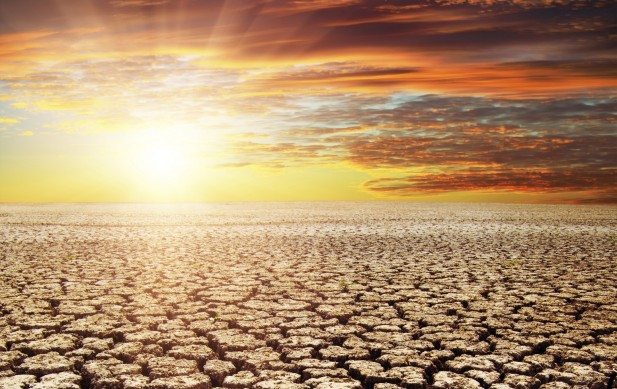
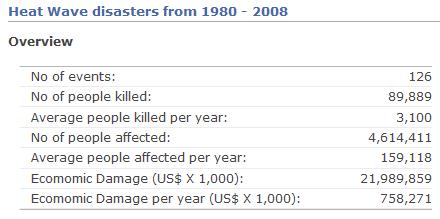 Global Heat Wave Disasters
Global Heat Wave Disasters.
I had no idea there were 126 killer heat waves, worldwide, from 1980 -
2008, with 89,889 deaths linked to extreme heat. More details from
preventionweb.net.
Cyclonic Swirl From "Beryl". Packing a 50-mph punch,
Tropical Storm Beryl more closely resembled an extratropical storm
Saturday - conditions not ripe for hurricane development as it tracks
toward Macon, Georgia or possibly Jacksonville over the next 72 hours.
Beryl is limping along at about 5 mph toward the southwest.
Image: grEarth.
Tropical Storm Beryl Discussion From Baron Services in Huntsville:
"Beryl remains classified as a sub-tropical Storm at 8pm by
the National Hurricane Center. The newest hurricane hunter report
indicated maximum sustained winds at 50 mph with higher gusts. Beryl is
moving SW at 6 mph tonight and has intensified slightly with pressure at 998mb.
The ridge will keep building to the east and this will
keep Beryl moving to the Southwest and turning to the West later on Sunday.
There is a small band of thunderstorms near the center of circulation,
but little overall strengthening is expected for Beryl. Dry air continues
to be entrained, which is very apparent on water vapor imagery.
Beryl is expected to make landfall somewhere along the
northeast Florida coast Sunday evening. The coast from northern Florida
to South Carolina can expect storm surge of 1 to 3 ft during high tide.
Most models, including the BAMS, now have Beryl moving farther inland over the
Florida panhandle than previously forecast. From there models diverge
somewhat as a middle level trough moves towards the Tennessee Valley and east
coast. This should pick Beryl (or the remains thereof) and pull it back
east across southern Georgia/northern Florida and then up the east coast.
This is contingent on the strength of the approaching trough, however, and the
higher resolution 15km BAMS has Beryl going as far west as Tallahassee before
curving back to the NW."
Baron Forecast Team.
Curtis Brideau
Tropical Storm Beryl. Packing 45 mph sustained
winds, Berly is expected to drift toward the southwest, coming ashore
somewhere between Macon, Georga and Jacksonville, Florida sometime
Tuesday. It is not expected to intensify into a hurricane. Map:
NHC.
"Spaghetti Plot". Here are a couple dozen model
solutions for the projected path of Beryl - almost all of them bring the
storm ashore as a moderate tropical storm, somewhere between Macon and
Jacksonville, before recurving to the northeast and swept out to sea.
Map:
source.
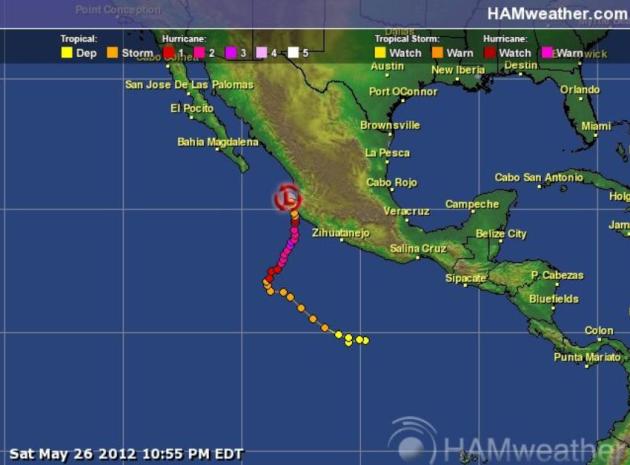 Tropical Storm "Bud" Brushes Mexico's West Coast.
Tropical Storm "Bud" Brushes Mexico's West Coast. Here's an update from
Huffington Post: "
Bud
is weakening and becoming increasingly disorganized in the Pacific just
off Mexico. The U.S. National Hurricane Center in Miami said Saturday
that Bud had degenerated to a remnant low. It was expected to dissipate
within the next day or say. Maximum sustained winds had weakened
significantly and were near 30 mph (48 kph) as the storm hovered about
15 miles (24 kilometers) off the coast of Cabo Corrientes, Mexico.
Forecasters say the storm could still drop another inch or two of rain
along Mexico's southwestern coast."
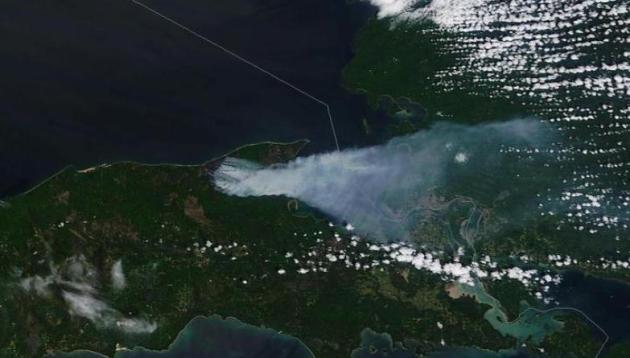 Michigan Wildfires From Space
Michigan Wildfires From Space. The Columbia, South Carolina office of the NWS shared this, via
Facebook: "
Thought we would share with you an outstanding
250 meter resolution Visible satellite image from this afternoon in the
Upper Peninsula of Michigan. Featured in the image is a large fire with
a eastward drifting smoke plume. Also visible is the lake breeze
boundary identified by the cumulus cloud field."
Sand Storm! Thanks to Wayne Angelo and
Instagram, for capturing a massive sandstorm heading for the Phoenix area Friday.
Tornado Touchdown Confirmed Near Montreal. Yes, "Tornado Alley" is shifting north over time. Here's an excerpt of a story at Canada's
CBC: "
Environment
Canada has confirmed an F-1 tornado touched down northwest of Montreal
Friday night. Meterologist René Héroux from Environment Canada said the
tornado touched down in St-Benoît-de-Mirabel. Damage at the scene
suggests winds reached up to 150 km/h, he said. Trees were uprooted,
roofs damaged and windows shattered as the severe storm rattled through
southern Quebec Friday night. The Mirabel area, northwest of Montreal,
was hit the hardest."
Photo credit above: "
The storm flattened this church near Mirabel, Que." (Pascal Robidas/Radio-Canada)
Bad Idea: Six Myths About How To React During A Disaster.
I think Myth #6 is wrong - a ditch still offers more protection in a
tornado than staying in your car, which will become airborne if it's a
major tornado. But I learned a few new things from this story at
foxbusiness.com; here's an excerpt:
"Here are some common misconceptions about disaster preparedness and what you really need to do to stay safe.
Myth No. 2: Open the windows in your home to equalize the pressure caused by a tornado
This is a terrible idea for a couple of reasons, explains Julie
Rochman, president of the Insurance Institute for Business & Home
Safety. "A, it doesn't work. And B, it's a really bad idea to stand in
front of a window when a tornado is flinging debris all over the place.
Plus, if there's an opening in the window, you could be sucked out."
Rochman recommends that people "leave their windows alone and
instead go to a windowless area, like a shelter, your basement or a
windowless room."
"Safe Rooms" Too Expensive For Homeowners, Even In Tornado Country. Here's a story from the Star Tribune's Bill McAuliffe, picked up by
scrippsnews.com: "
Even
in the heart of tornado country, where more than 3,000 tornado-damaged
have been under repair the last year, there is still not a "safe room"
in sight. Safe rooms are reinforced interior spaces designed to offer
even more protection from tornadoes and hurricanes than basements do.
But they're expensive. And across north Minneapolis, residents are even
cutting corners on shingles, said contractor Ishmael Israel. "They're
opting for the more economical route," Israel said, adding that typical
disaster precautions in the neighborhood now include storing bottled
water and having working flashlights and extra batteries. Safe rooms,
which can also do double-duty as laundry rooms or bathrooms, are
designed to withstand a blow from a 15-pound 2-by-4 fired at 100 mph.
Flying debris, such as lumber, is one of the most dangerous features of
a tornado. Standard safe rooms also offer overhead protection that
basements often do not."
* basement safe room above courtesy of a company called "
rhinovault" that offers a wide range of safe room options.
March 15 Storm Dumped Enough Water To Be Classified As A 1-In-100 Year Storm. Here's an update from
The Peterborough Examiner, serving Ontario, California: "
A
storm that struck Peterborough on March 15, causing localized flooding
in some neighbourhoods, dumped enough water on the city to be
classified a one-in-100-year storm, shows a report that goes to city
council Monday night. The city identified 83 road flooding locations,
23 culverts or catch basins that overflowed, 53 flooded basements and
45 sewage backup spots. Between 40 millimetres and 80 millimetres of
rain fell on the city, depending on the location in the city, according
the city’s rain gauge network. The city should only get hit by a storm
that severe once every 100 years, utility services director Wayne
Jackson states."
Photo credit above: "Pylons warn motorists to a washed out sections of Harper Rd. on Friday, Mar. 16, 2012 in Peterborough following a severe storm." CLIFFORD SKARSTEDT/PETERBOROUGH EXAMINER/QMI AGENCY
El Nino May Lessen Hurricane Risk. Right now we're
in an ENSO-neutral situation (no El Nino or La Nina); ocean water
temperatures in the Pacific pretty close to normal for late May. Some
oceanographers are predicting a mild El Nino warming by the end of 2012,
which correlates with stronger winds over the tropics, winds that can
shred tropical depressions and prevent them from maturing into
hurricanes. But El Nino may come too late for the 2012 hurricane season.
Here's an excerpt from an
msnbc.com story: "
To
say our weather in many parts of the country has not been normal of
late. In fact, far from it when you consider the historic and severe
hurricanes and tornadoes we have witnessed to the freak events like the
halloween blizzard in the east to a lack of winter for
millions of americans this past season. It's against that backdrop that
today's official government hurricane forecast comes out just as
America geared up for the traditional start of the summer kickoff
weekend, and it's where we begin our reporting tonight with NBC's tom
costello. Get ready for the ferocious power of mother nature . The official start of hurricane season
is still a week away, but it's already been an active two weeks.
tropical storm Alberto has come and gone as hurricane Bud churned off
new mexico. now a category two storm. Today from NOAA, a prediction for
a near normal hurricane season between june 1st and november 30th . That means 9 to 15 tropical storms with 4 to 8 strengthens into hurricanes. and one to three of those becoming major hurricanes , category 3 or greater. the big wild card , the warmer effect from EL Nino in the Pacific."
10 Steps To Take Before Storm Season.
Forbes.com
has some good advice for every family - this is geared more to
residents of Hurricane Alley, but there are some good take-aways for the
rest of us impacted by flooding and tornadoes. Here's an excerpt:
- "Locate and agree on a safe room. Plan to
find the lowest place in the house, without windows. Usually this is
the basement or an interior closet or storeroom. Meet as a family and
agree to the plan to meet there in case of emergency. Be sure that
each family member has a plan for shelter away from home in case of a
storm that doesn’t allow everyone to get home.
- Supplies. Be sure to keep supplies on hand
in or near the safe room. These should include: water, a water
purification kit, non-perishable snacks/food, blankets and pillows,
clothing, first aid, medical equipment for special-needs family
members, pre-moistened towelettes, hand sanitizer, zip-lock plastic
bags, disposable eating ware, duct tape, necessary toiletries,
flashlights with fresh batteries, radio, cell phone with charged
batteries, entertainment items such as books, or games, pet care
items. If you have a baby or toddler you will need appropriate
supplies: diapers, baby food, formula, toys, etc. You may want a
battery-operated laptop with a cellular modem to be able to connect
with email and Internet.
- Evacuation plan. Have a plan if you will
be required to evacuate due to incoming weather. Hurricanes and floods
approach more slowly giving people time to escape."

Snowe Calls For Action In Wake Of Reported Mismanagement Of National Weather Service Funding. From Maine Senator Olympia Snowe's D.C. offices - here's a snippet of a recent
press release: "
WASHINGTON, D.C.
– In response to the announcement that the Director of the National
Weather Service (NWS), Jack Hayes, was stepping down from his position
today in response to an investigation that senior management at NWS
misappropriated millions of taxpayer dollars, U.S. Senator Olympia J.
Snowe (R-Maine), the Ranking Member of the Oceans, Atmosphere,
Fisheries, and Coast Guard Subcommittee, released the following
statement: “The deeply troubling revelation that senior staff at the
National Weather Service, which provides indispensible storm and
weather forecasting, have been conducting improper and potentially
illegal transfers of taxpayers’ money is unacceptable. While the
Director of the National Weather Service has stepped down, there are
many more remaining questions which require answers from both National
Oceanic and Atmospheric Administration and the Department of Commerce –
and any and all individuals who bear responsibility in this misconduct
must be held fully to account."
Not Forgetting Why We Celebrate Memorial Day. Thanks
to WeatherNation TV meteorologist Aaron Shaffer for snapping this photo
in Boston, showing thousands of American flags on Bunker Hill.
Record Heat For The Indy 500? The ECMWF model is
predicting 34 C, which works out to 93.2 F. On the track temperatures
may reach 115 F. Ouch. Here's an excerpt of a paper from Climate Nexus:
"....
a high-pressure system approaching the Ohio Valley could push temperatures for the 96th annual Indianapolis 500 into record-breaking territory.
According to the National Weather Service office in Indianapolis,
temperatures have reached 90 degrees only five times in race history,
with 92 degrees in 1937 as the all-time high. If predicted temperatures
are accurate, race weather may be the hottest on record and could create
difficulties for both drivers and fans alike....Recording-breaking
temperatures earlier in the year are consistent with the larger pattern
of climate change, which makes heatwaves and other types of extreme
weather both more frequent and more intense. For more information about
how climate change is changing long-term weather trends, check out Climate Signals, a summary of the latest science around the connections between extreme weather and climate change."
* more race information for the Indianapolis 500, which kicks off noon today,
here.
TV Weather Reporter Caught Faking Storm During Live Broadcast (Video).
Oops! I've been trying to do this with a tornado for years now, but no
luck. Hey, it's all about the ratings, right? Think we can fake a
stunningly beautiful Memorial Day Weekend? Check out the fake sandstorm
video from
Yahoo News; here's an excerpt: "
A
Romanian TV weatherman has put a new spin on the phrase "having sand
kicked in your face," after he was caught faking a storm during a live
news report. The Metro reports that the reporter was filing a story
about heavy winds along the Black Sea coast,
which were gusting at more than 60 mph. At least, the winds were
blowing that hard before the weatherman began filing his report. But by
the time he went live, the winds had apparently died down. So in an attempt to recreate the stormy conditions, the reporter had a production assistant begin kicking sand in his direction.
The reporter then told viewers, "The wind blows with incredible power;
there are moments when it is impossible to stand up here. The wind
blows the sand at over 60 km per hour. It blew away the beach umbrellas
and the tourists had to leave in a hurry."
How To Destroy The Internet. No, don't do this - not even sure
Gizmodo.com
should be doing a story on this (or I should be republishing it) - but I
came away from this article believing that it's probably impossible to
bring down the entire net. It would take a massive coordinated effort on
nearly every continent, at least doing it the conventional way. What I
worry about (a little) is someone finding an unconventional way to wreak
havoc. Here's an excerpt: "
Remember when Anonymous threatened to destroy the entire internet?
We laughed, and ultimately their words were just hacker hubris. But it
got us thinking—could someone actually destroy the Internet? We did some
digging, and guess what: With enough effort, the entire thing can be
shattered. Physically. Completely. Here's how to kill the net.
Before we destroy mankind's greatest, vastest machine, let's get
something polite out of the way: don't. Destroying the Internet's core
infrastructure would constitute the greatest act of global terrorism in
history and/or a declaration of war against every sovereign nation in
existence—to say nothing of the danger it would put both you and others
in. This is a thought exercise.


Sunday Sauna
I should be serving towels (and helmets) with
this forecast. And for the record: that "dry bias" I was seeing on the
maps a few weeks ago? Never mind.
We're closing in on 10" of rain for May; at this
rate I may be growing rice, not roses, in my back yard.<p>Climate
change making our weather patterns more erratic: perception or reality?
86" of snow 2010-2011, 22" last winter. Green lawns and boats on
Minnesota lakes in late March, followed by a flip-flop from severe
drought to perpetual flood in, what, 3 weeks? Weather on steroids.
Minnesota monsoon season gives way to a hot
front today, temperatures nearly 40 degrees warmer than Thursday AM. If
the sun stays out for a few hours today (likely) we should see low to
mid 90s, with a drippy, debilitating dew point above 70.
Guam - with lakes.
While you slather on sunscreen and splash in
your favorite lake keep a watchful eye on the western sky. Conditions
are ripe for another round of strong/severe T-storms by tonight.
Up to one inch of rain may falls tonight, but
Monday morning puddles give way to rapid clearing, dew points falling
through the 50s. We may actually salvage a decent Memorial Day; highs
near 80.
It's a meteorological miracle!
Climate Stories...
Bonn Climate Talks End In Discord And Disappointment. The story from Climate Central and
OPB News; here's an excerpt: "
The
latest round of international climate change talks finished on Friday
in discord and disappointment, with some participants concerned that
important progress made last year was being unpicked. At the talks,
countries were supposed to set out a work plan on negotiations that
should result in a new global climate treaty, to be drafted by the end
of 2015 and to come into force in 2020. But participants told the
Guardian they were downbeat, disappointed and frustrated that the
decision to work on a new treaty – reached after marathon late-running talks last December in Durban – was being questioned."
It's Not About Climate Change, It's About Keeping Advertisers Happy.
An interesting perspective - and not the first time I've encountered
this train of thought: "Let's hold off reporting on what's happening
with climate trends, because it might make some of our advertisers, the
men and women who pay the bills, a little uncomfortable." Right. Here's
an excerpt from a post at
fair.org: "
Scientific American has a dilemma (Extra!, 2/11): It takes advertising
from oil companies whose profits depend on denying the most important
scientific fact of our era, the reality of human-caused climate change.
The magazine would lose its whole brand identity if it pretended
global warming wasn't happening, but there are things short of that
that will make its fossil-fuel-selling advertisers a little happier.
Such as running blog posts like "It's Not About Tar Sands–It's About Us"
by Melissa C. Lott and Scott McNally (5/23/12).
Lott and McNally–both of whom have worked for the energy industry when
they aren't science blogging–dispute the idea that people concerned
with climate change ought to discourage Canada from extracting and
burning its tar sands, because: Stopping
Canada from producing tar sands will not curb the world's oil demand,
reduce fossil fuel consumption or significantly reduce our total
greenhouse gas footprint."
Knocking The Wind Out of U.S. Energy Options. Here's a snippet from an important, scientifically eloquent Huffington Post article: "
Unless
Congress acts soon, the wind industry will have to trim its sails--and
its workforce. An essential federal tax break for the fledgling
industry, scheduled to expire at the end of the year, has become a
victim of Washington gridlock. President Obama was in Newton, Iowa,
yesterday at TPI Composites, a leading wind blade manufacturer, to
again ask Congress to extend the production tax credit, which provides a
credit of 2.2 cents per kilowatt-hour of electricity produced by wind
turbines--as well as geothermal, biomass and underwater turbines--for
the first 10 years of production. The president also urged Congress to
expand a 30 percent tax credit instituted in 2009 for investments in
companies manufacturing renewable energy components. The package,
called the Advanced Energy Manufacturing Tax Credit, provided $2.3
billion in credits for solar panel parts, "smart" electric meters, fuel
cell components and wind turbines." Photo: AP.
U.S. Cut Its Carbon Emissions In 2011 - But China Erased The Gains.
The problem? Coal-fired energy, which China is leaning on heavily for
its growth - it's the dirtiest fuel, from a carbon emissions standpoint;
here's a clip from a
Washington Post story: "
Yes, it’s true: Americans are slowly starting to tackle global warming. U.S. carbon emissions dropped 1.7 percent last year, according
to the International Energy Agency. But that only went so far. Thanks
to China’s fast growth, the world’s greenhouse-gas emissions hit record
highs in 2011. How did the United States managed to restrain its
carbon-dioxide? The IEA offers up
three reasons for the decline: First, many U.S. power companies have
been swapping out coal for somewhat cleaner natural gas, since the
latter has become so cheap. That’s helped. The United States also had a
mild winter in 2011, which meant less energy was needed for heating.
Finally, Americans have been driving less and purchasing more efficient
cars of late, which has tempered the country’s oil use. It wasn’t a huge drop. It may prove fleeting. But it was a step toward less carbon."
Photo credit above:
"Up, up, up." (TIM WIMBORNE - REUTERS)
Greenhouse Gas Emissions Across The Globe Hit A Record High. Following up on the story above comes this piece from
Climate Central: "
Thanks
to developing countries like China, greenhouse-gas emissions across
the globe hit record highs in 2011, according to the International Energy Agency (IEA). While the IEA’s report is a preliminary estimate of carbon dioxide emissions for 2011, the news as a whole is not good. The total weight of CO2 that
entered the atmosphere thanks to fossil-fuel burning last year was
31.6 billion metric tons (or nearly 35 billion old-fashioned tons).
That’s a 3.2 percent increase over 2010, setting an all-time record. To
see what that looks like in real time, you can check out Deutche
Bank’s carbon counter, which pegs the accumulate weight at more than 3.7 trillion metric tons."
Climate Armageddon: How The World's Weather Could Quickly Run Amok (Excerpt). Here's a troubling excerpt of a story at
Scientific American: "
The
eminent British scientist James Lovelock, back in the 1970s,
formulated his theory of Gaia, which held that the Earth was a kind of
super organism. It had a self-regulating quality that would keep
everything within that narrow band that made life possible. If things
got too warm or too cold—if sunlight varied, or volcanoes caused a fall
in temperatures, and so forth—Gaia would eventually compensate. This
was a comforting notion. It was also wrong, as Lovelock himself later
concluded. "I have to tell you, as members of the Earth's family and an
intimate part of it, that you and especially civilization are in grave
danger," he wrote in the Independent
in 2006. The world has warmed since those heady days of Gaia, and
scientists have grown gloomier in their assessment of the state of the
world's climate. NASA climate scientist James Hanson has warned of a
"Venus effect," in which runaway warming turns Earth into an
uninhabitable desert, with a surface temperature high enough to melt
lead, sometime in the next few centuries."
Timescale Matters: 800,000 Years Of CO2 (NOAA). I
was floored when I saw this YouTube clip from NOAA, tracking CO2 levels
going back 800,000 years (tracking carbon is Antarctic ice core
samples). The data set shows a spike between 20 and 70 North Latitude,
and it's the rate of CO2 increase that is alarming. We've had increases
in the past (related to changes in the Earth's orbit around the sun),
but the atmosphere has never seen a CO2 spike like the one we've
experienced in the last 50 years. More from
NOAA: "
Time
history of atmospheric carbon dioxide from 800,000 years before
present until January, 2009. Recommend full screen/HD to read titles.
See http://carbontracker.noaa.gov for more information on the global carbon cycle."
The Big Picture. Data going back 800,000 years
before Christ show fluctuations in CO2 levels, but during the warm
(astronomical) cycles CO2 levels stayed within at 225-300 ppm range.
We're now over 392 ppm, and unless we begin reducing greenhouse gas
levels (soon) those levels may double by the end of the century,
resulting in a 3-8 F. temperature rise worldwide. I'm sure how much
clearer the trends need to be before reasonable, logical people realize
that we have a bit of a problem here. YouTube animation courtesy of
NOAA.
Killer Heat Waves: Heat-Related U.S. Deaths Could Increase By 150,000 By Century's End Due To Climate Change. Here's a clip from an
NRDC article: "
NRDC released a report
today projecting that more than 150,000 additional Americans could die
by the end of this century due to excessive heat caused by climate
change. This startling conclusion is based on peer-reviewed scientific
papers published recently
by Dr. Larry Kalkstein and colleagues. This is the kind of study that
should make headlines around the country but is generally ignored when
published only in scholarly journals. So NRDC is presenting the
information in a more accessible manner, adding calculations of the
cumulative additional death toll attributable to projected global
warming by mid-century and century’s end (the report, including these
additional calculations, was reviewed by Dr. Kalkstein to ensure that
we have presented the information accurately)."
Climate Change Allows Once-Rare British Butterfly To Thrive. The story from
The Christian Science Monitor: "
Warming in Great Britain
appears to have given a little brown and orange butterfly an edge. The
brown argus butterfly has spread about 49 miles (79 kilometers)
northward on the island over 20 years, observations indicate. Although
it's well known that climate change can prompt plants and animals to
shift the ranges in which they live, the brown argus (Aricia agestis)
has widened its living quarters with unusual speed, according to an
analysis of decades of data collected by British volunteers. The butterfly's secret? A new host plant to feed its larvae."
Photo credit above: "
Warming has allowed the brown argus butterfly to rapidly expand its range in England and Wales." Louise Mair.
Climate Change And The Media. Here's a post from
redding.com: "
According to Yahoo News,
the Casey Anthony trial was the number one issue in 2011. Global
climate change did not make the top ten, although, according to the National Oceanic and Atmospheric Administration, the U.S. experienced "14
weather and climate disasters in 2011, each (of which) caused $1
billion or more in damages -- and most regrettably, loss of human lives
and property." When Rasmussen
recently conducted a national telephone survey of what Americans
considered the most important issues, global climate change was not
mentioned. Number one on the list was the economy with 82 percent of
Americans reporting this as being very important. Their tenth concern
was Afghanistan with 27 percent of Americans citing the war as very
important."
Countries Doing Too Little On Warming: Research. Reuters has the details: "
Greenhouse
gas emissions in 2020 could rise to nine billion metric tons (9.92
billion tons) above what is needed to limit global warming as some
countries look set to miss their emissions cut targets, a report by
three climate research groups said on Wednesday. Countries
have agreed that deep emissions cuts are needed to limit an increase
in global average temperature to less than 2 degrees Celsius this
century above pre-industrial levels, a threshold that scientists say is
the minimum required to limit devastating effects like crop failure
and melting glaciers. They believe the 2
degree limit is only possible if emissions levels are kept to around
44 billion metric tons of carbon dioxide equivalent in 2020."
Accusations That Climate Science Is Money-Driven Reveal Ignorance Of How Science Is Done. Here's an excerpt of an eye-opening article from
Ars Technica: "
One
of the unfortunate memes that has made repeated appearances in the
climate debate is that money isn't just influencing the public debate
about science, but it's also influencing the science itself. The
government, the argument goes, is paying scientists specifically to
demonstrate that carbon dioxide is the major culprit in recent climate
change, and the money available to do so is exploding. Although the
argument displays a profound misunderstanding of how science and
science funding work, it's just not going away. Just this week, one of
the sites where people congregate to criticize mainstream climate
science once again repeated it, replete with the graph below. That graph originated in a 2009 report from a think tank called the Science & Public Policy Institute (notable for using the serially confused Christopher Monckton as a policy advisor). The report, called "Climate Money: The climate industry: $79 billion so far—trillions to come"
(PDF) and prepared by Australian journalist Joanne Nova for the
Science & Public Policy Institute, claims to show how money has
distorted climate science."
